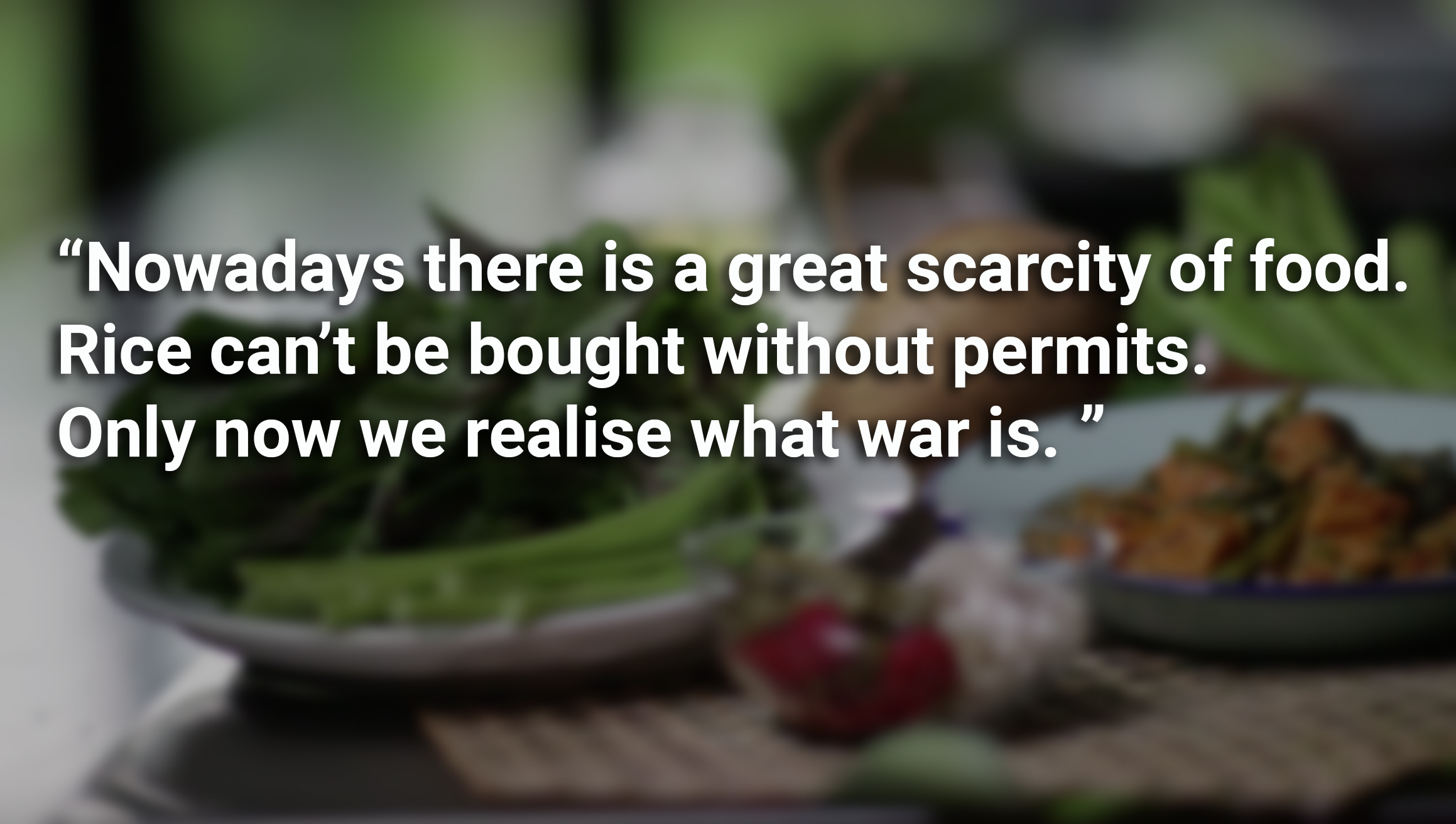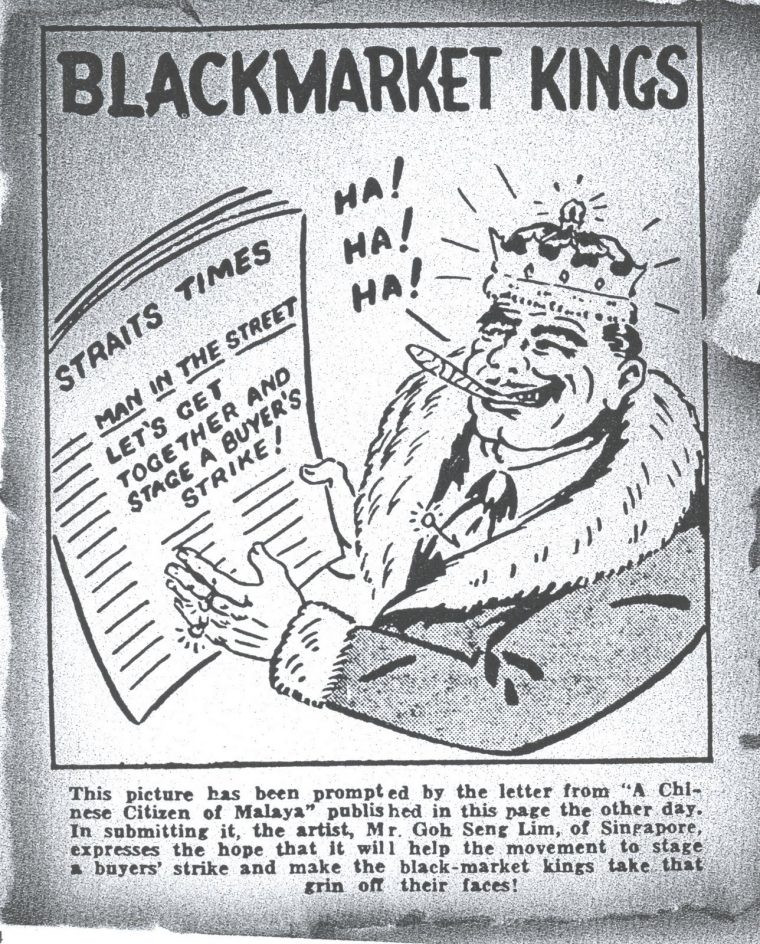The Japanese Occupation from February 1942 to September 1945 was one of the hardest times in Singapore history.
For the young Singaporean today, the collective agony of World War 2 horrors reside in textbooks and museums. For older folks, like our grandparents (or even parents), the pain was real, especially the pain of hunger.
Singapore was renamed Syonan-to (Light of the South) during the Occupation. Ironically, however, for the people living here, life was a dark pit, where every meal could be your last, if you could manage to put together a meal at all.
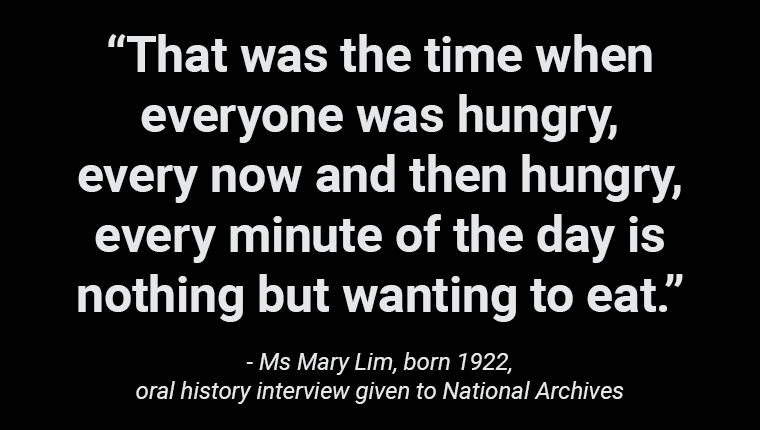 Lim's oral history interview can be found here.
Lim's oral history interview can be found here.
No food, no money
Food was scarce during the Occupation. This was because Singapore's food supply was reduced and whatever came in was unequally distributed among the people. The existing food stocks on the island declined quickly as demand outstripped supply.
Food prices soared.
Prices for necessities such as rice, sugar, and salt were controlled by the Japanese Military Administration Department (M.A.D). They set the maximum prices for these goods and announced them in the newspapers and in notices around town.
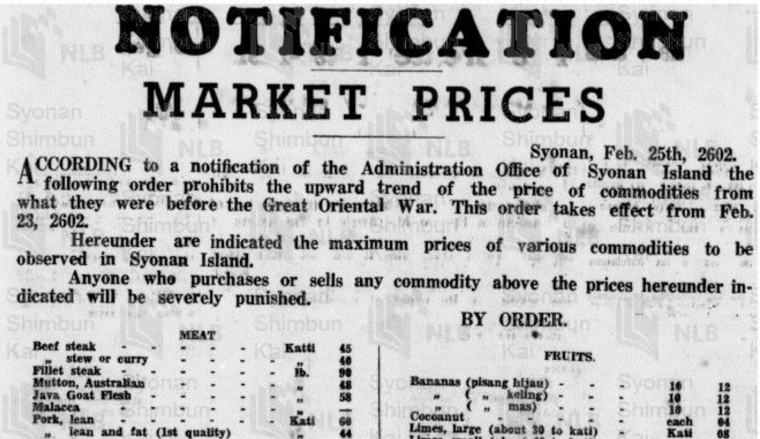 Commodities price by M.A.D announced in the Syonan Times (Syonan Shimbun), 25 February, 1942. Taken from NewspaperSG.
Commodities price by M.A.D announced in the Syonan Times (Syonan Shimbun), 25 February, 1942. Taken from NewspaperSG.
The Japanese also issued their own currency, which the locals called 'Banana Money', because of the banana tree designs on them.
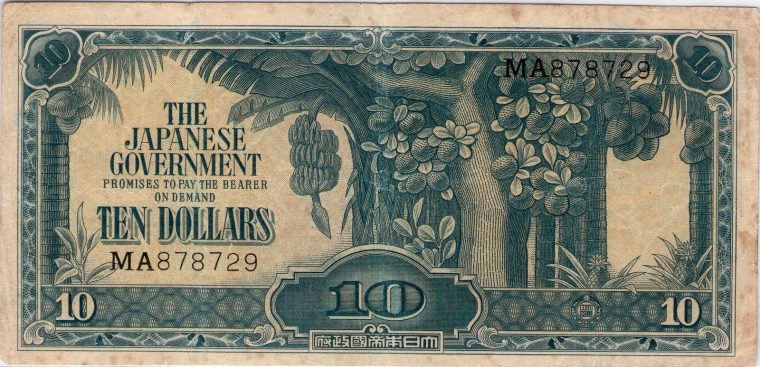 Banana Money. Source.
Banana Money. Source.
The Japanese printed banana money whenever they needed it, which led to hyperinflation. The notes essentially became worthless pieces of paper. People would find themselves with huge amounts of banana money, but were unable to use them to buy food.
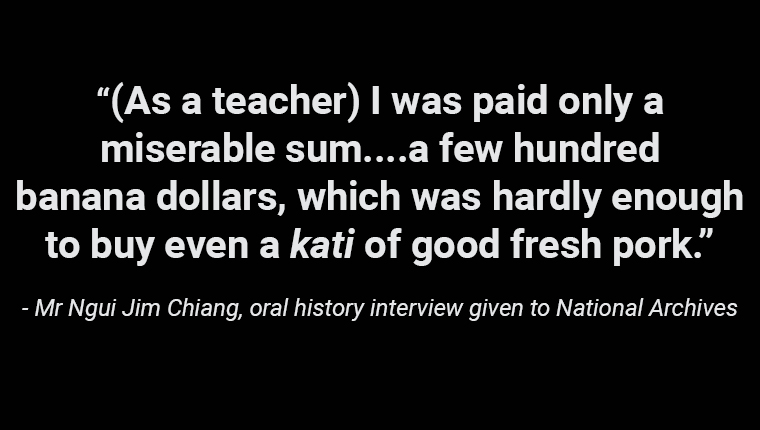 Ngui's interview can be found here. One kati is approximately half a kilogram.
Ngui's interview can be found here. One kati is approximately half a kilogram.
Due to the severe food shortage, the locals were subjected to food rationing. Each household only received a small unit of food each month.
This allocated unit of food steadily decreased over the years until being hungry became the norm.
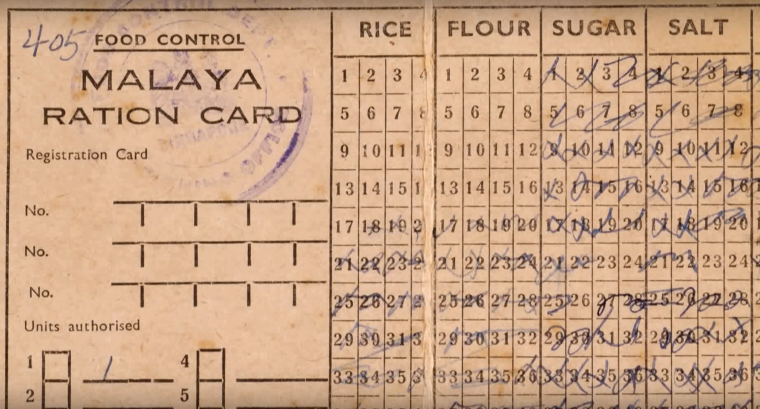 Food ration card. Screen grab from Youtube.
Food ration card. Screen grab from Youtube.
Rice, the very staple that people in Singapore depended on for nutrition, was the most severely affected. By 1944, two years into the occupation, people could only have one bowl of rice per day - and that was if you came from a wealthy family.
 Alexander's video interview can be found here.
Alexander's video interview can be found here.
In response, the Japanese encouraged people to find other substitutes for rice, such as tapioca and sweet potato, as seen in this article published in the Syonan Times (Syonan Shimbun):
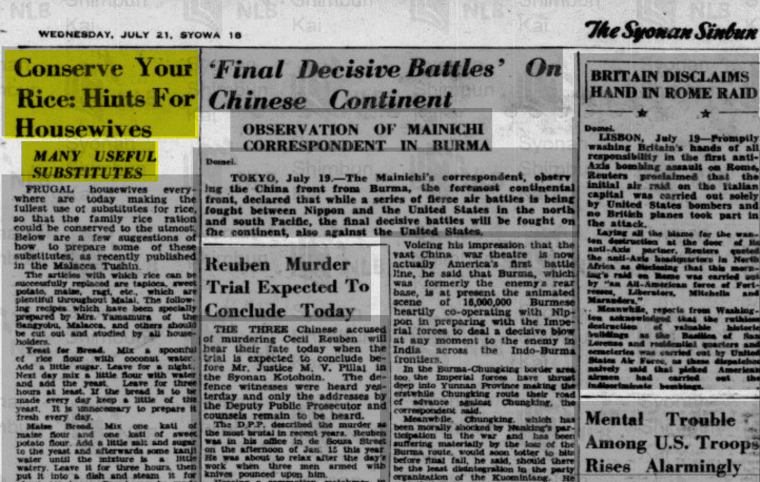
Black Market
Amidst the starvation suffered by the population, the truth was that there was no real shortage of rice because all rice stocks were hoarded by the Japanese military to feed themselves and their supporters.
Many people had to turn to the black market to get the food they needed. Of course, items on the black market were sold at ridiculous prices.
Imagine yourself as a mother of a young child who needed milk, and the only way to get it was to pay hundreds of dollars for a small tin off the black market. Essentially, people had a love-hate relationship with the black market.
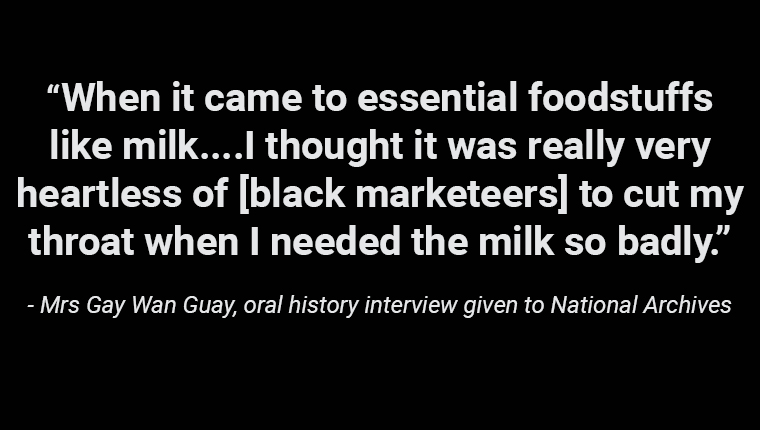 Gay's oral history interview can be found here.
Gay's oral history interview can be found here.
Every meal a last meal
People turned to food that was more readily available on the island. Coconut, seafood, and other root crops became staples. The shortage of supplies enforced by the Japanese made every meal a potential last meal.
 Koh's oral history interview can be found here.
Koh's oral history interview can be found here.
Ironically, the diet back then is what we would consider a 'heathy' diet today. People ate less meat, less sugar, and less oil, but more vegetables and seafood.
However, while the diet was considered 'healthy' in today's context, people back then were not eating enough, which led to diseases such as beri beri (lack of vitamin B1); the death rate also spiked during the Occupation - a dark period indeed in Syonan-to.
Stay tuned for Part 2 of wartime hunger, where we look at the campaign to grow more food, as well as the kindness experienced among other survivors.
To learn more about how people ate during World War 2, you may visit the 6-episode series titled Wartime Recipes or read Wartime Kitchen by Wong Hong Suen.
Top photo adapted from Youtube.
If you like what you read, follow us on Facebook and Twitter to get the latest updates.
If you like what you read, follow us on Facebook, Instagram, Twitter and Telegram to get the latest updates.
